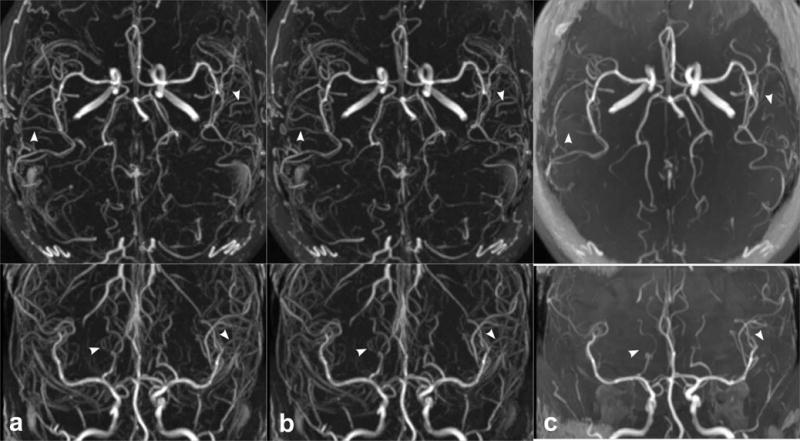Figure 5.

Impact of cardiac triggering on image appearance for super-resolution QISS MRA in a 52-year-old female, in comparison with 3D TOF MRA. Images are axial (top panel) and coronal (bottom panel) maximum intensity projections. Three-shot radial QISS MRA acquired (a) with cardiac triggering (scan time 5 min 36 s) and (b) without cardiac triggering (scan time 4 min 17 s); there is minimal benefit from the use of cardiac triggering. (c) Resolution- and coverage-matched 3D TOF MRA (scan time 3 min 56 s). Compared with TOF, QISS demonstrates improved arterial-to-background contrast and display of small arterial detail (arrowheads).
